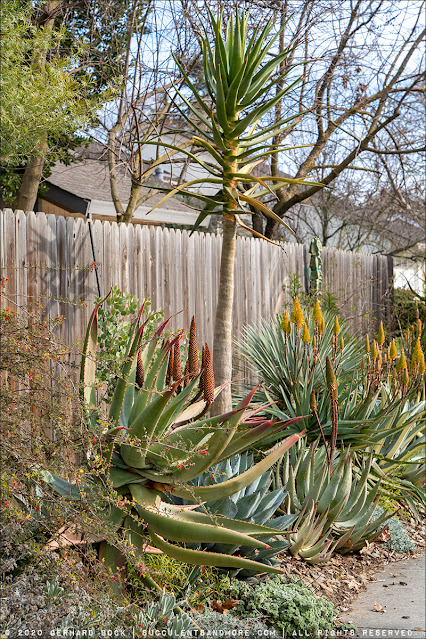Hindsight is 2020. A bad pun, I know, but I've been wanting to say it all year. And now that I've indulged myself, I won't say it again. I want to take this opportunity to review what 2020 had in store for me as far as gardening and plants were concerned. Garden visits and opportunities to hang out with fellow plant nerds were few and far between, but as far as our plants were concerned, 2020 was just another year with a long dry summer and a dry fall. Originally, I'd planned to do one consolidated year-in-review post, but to my surprise I had more ground to cover than I'd expected. To keep the number of photos manageable, I'm going to cover one quarter per post, for a total of four installments. ⬐ JANUARY January was the beginning of aloe season. Ours were just starting ... Our aloes getting ready to flower but the aloes in John Miller's Oakland garden were in full bloom when I visited him at the end of the month:










